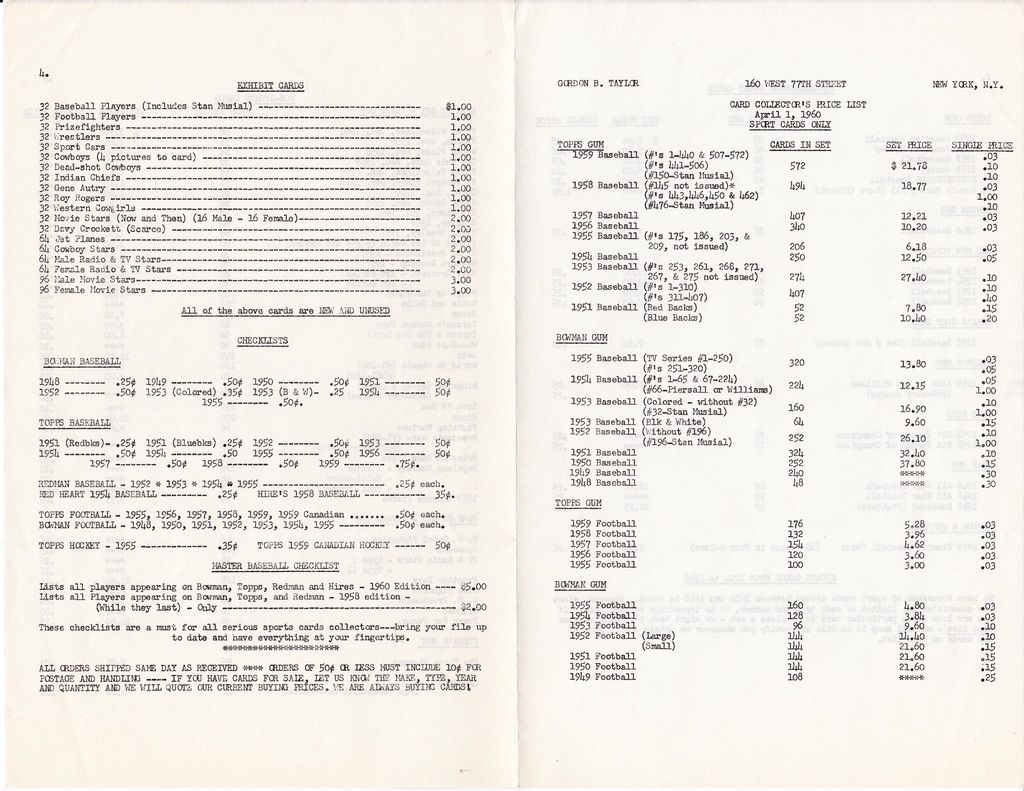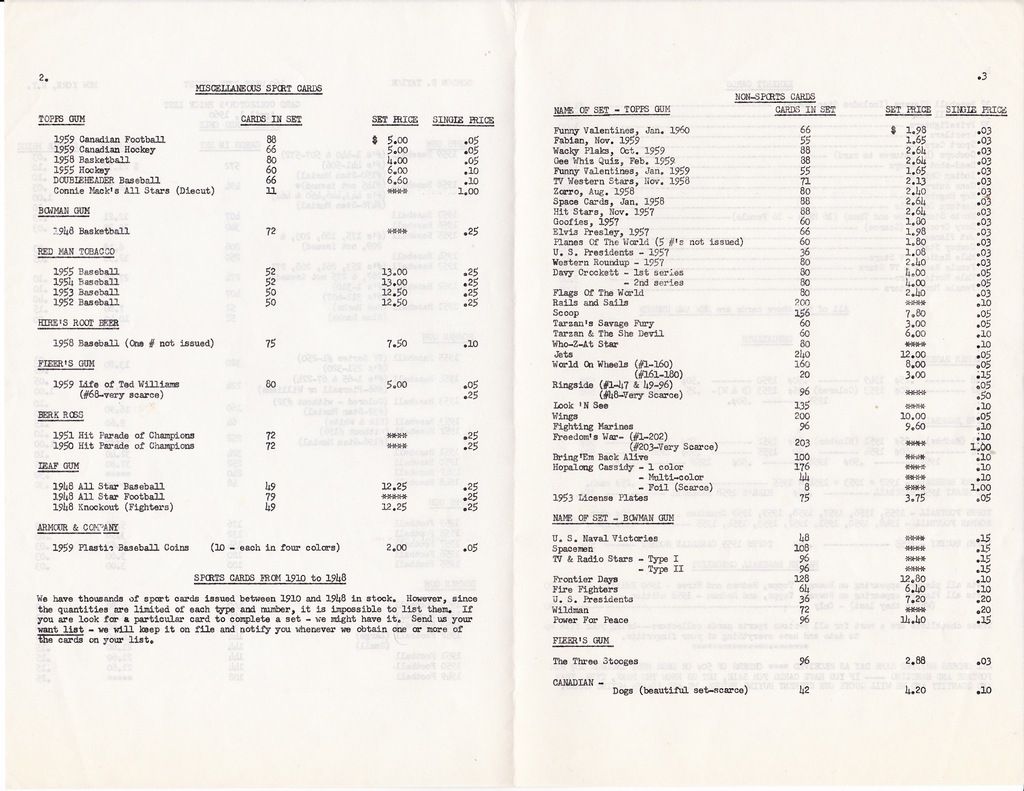Before the 1950s, there were no sports card dealers as we know them today. There were antique shops and ephemera dealers who might have old sports cards or similar things in stock, and there were collectors who would sell cards or sets on an ad hoc basis through ads in Card Collector's Bulletin or Sports Exchange Trading Post. But if you wanted to buy the current year's baseball card set, or sets or specific cards from recent years, you were pretty much out of luck; you had to assemble sets yourself, or ask around to find another collector with the cards you needed.
That began to change after 1950. In 1951, Sam Rosen retired from the garment business and became the first real card dealer. Rosen's stepson was Woody Gelman, who worked for Topps Chewing Gum, which had been issuing miscellaneous card sets for a few years and put out its first baseball card sets that year. Gelman would funnel Topps' excess card inventory through Rosen's business, and Rosen also served as the fulfillment center for the Topps Trading Card Guild, through which Topps sold vending boxes, rack packs, and individual cards. Rosen also bought cards from individual collectors at wholesale prices, and built up a large inventory, including many sets. (Most of this information is from board member Dave Hornish's (toppcat) book "The Modern Hobby Guide to Topps Chewing Gum, 1938-1956".)
Below is Rosen's price guide from October 1956, the earliest one I have. It consists of a single 8.5" x 11" sheet of paper folded in half. I'm not sure who wrote the ink annotations. Note that Rosen was selling 1952 Topps baseball cards for 2 cents each, with high numbers for 5 cents, the same prices he was charging in a 1953 ad in Card Collector's Bulletin (which I don't have).
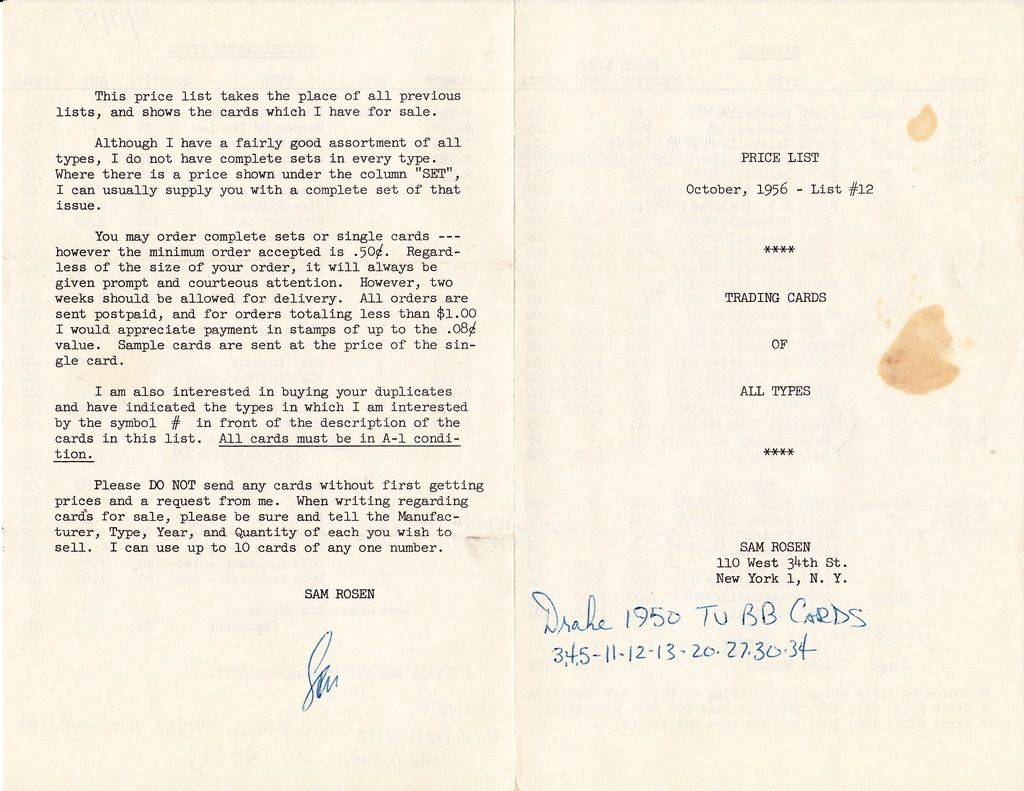
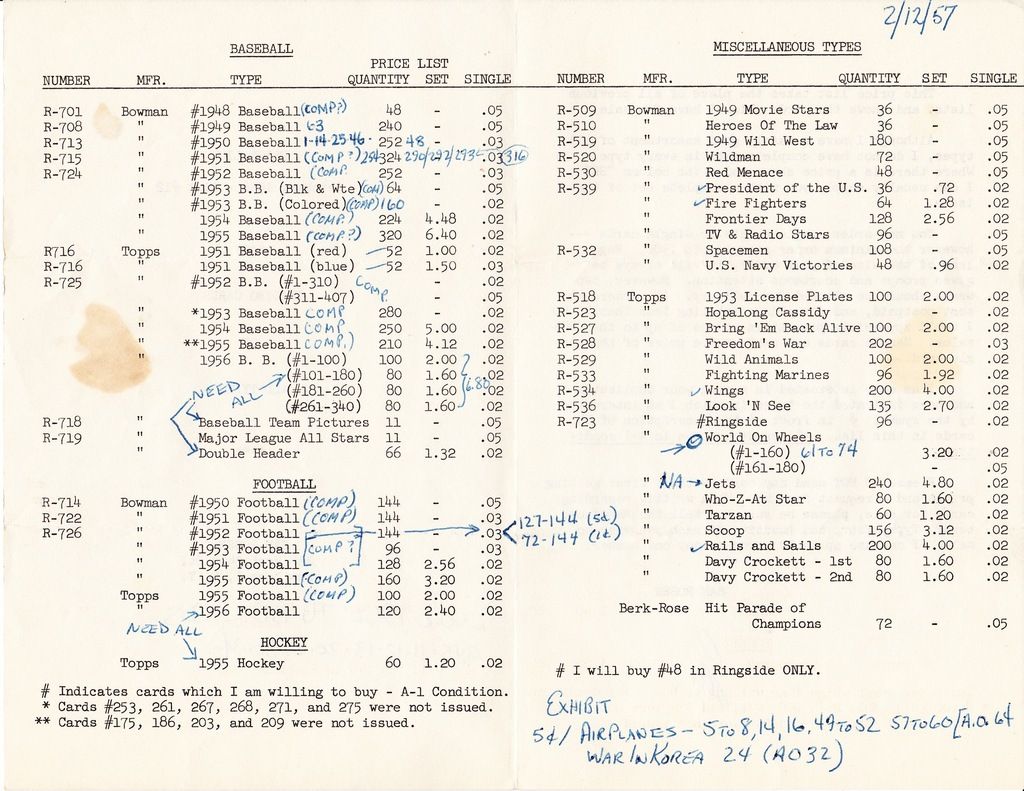
Here are the first two pages of Rosen's July 1958 price list, which consisted of three legal-size sheets of paper stapled together at the corner. The first page has information on the 1958 Topps baseball cards, which Rosen was selling for $9.88 a set, and summaries of what else he had available. (The part that my scanner cut off at the bottom consists of the words "low prices", then "Thanks for your kind co-operation. Sincerely, SAM ROSEN") The second page has his prices for sports cards, and I've separately scanned the bottom of that page, which was cut off by my scanner. I didn't scan the third page, which has Rosen's prices for non-sport cards. I also didn't scan another three-page document that Rosen issued at the same time, which includes the same info about 1958 Topps baseball, info on preordering the 1958 Topps football set for $2.64, checklists of Exhibit cards and 1956 Topps baseball buttons available for sale, and the prices Rosen was paying to buy Topps and Bowman baseball cards. (The most he was paying was 3 cents for 1952 Topps high numbers, 1948 and 1949 Bowman, and 1953 Bowman B&W.)
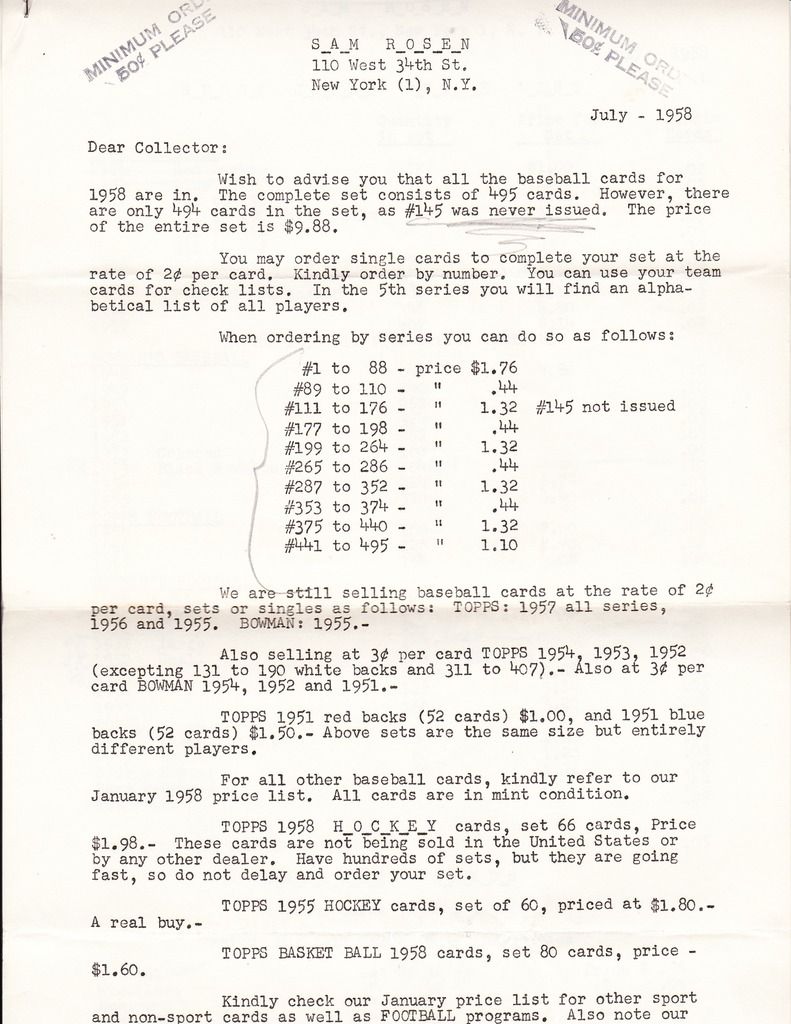
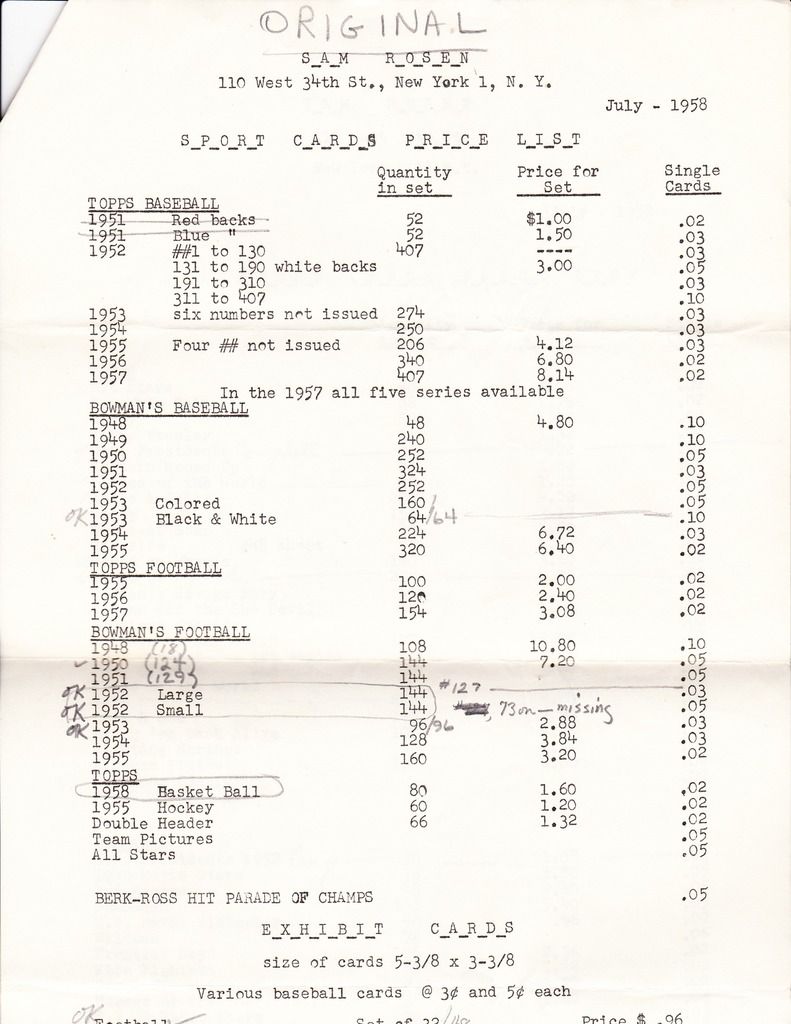
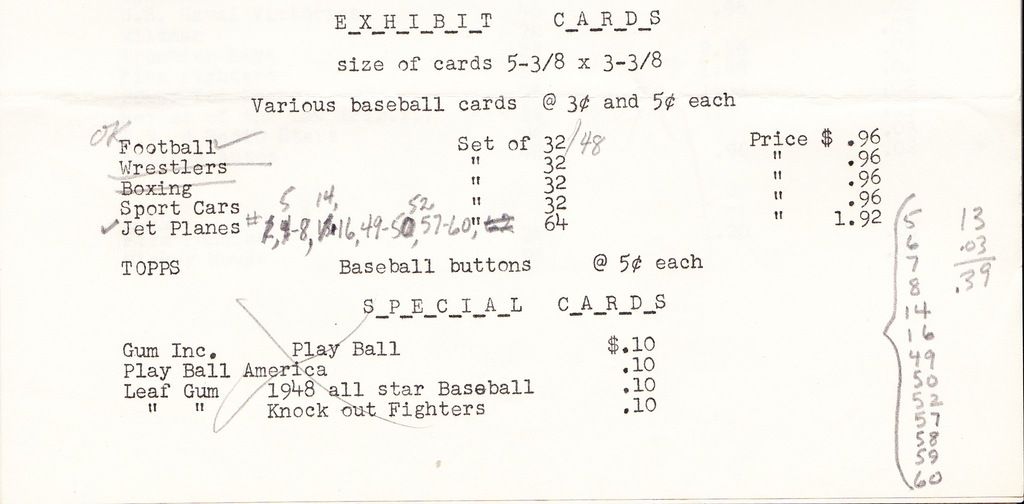
By this time, Rosen had a competitor in the person of Gordon B. Taylor, a 47-year old former consulting engineer who collected cards and decided to become a full-time dealer after seeing what Rosen was doing. I'm not sure exactly when Taylor started his business, but by 1958 he claimed to have 1 million cards in stock. Below is a letter that Taylor sent out to his customers in March 1958 announcing the new 1958 Topps baseball cards, and touting his alphabetical checklist, "two years in preparation", an ad for which accompanied the letter.

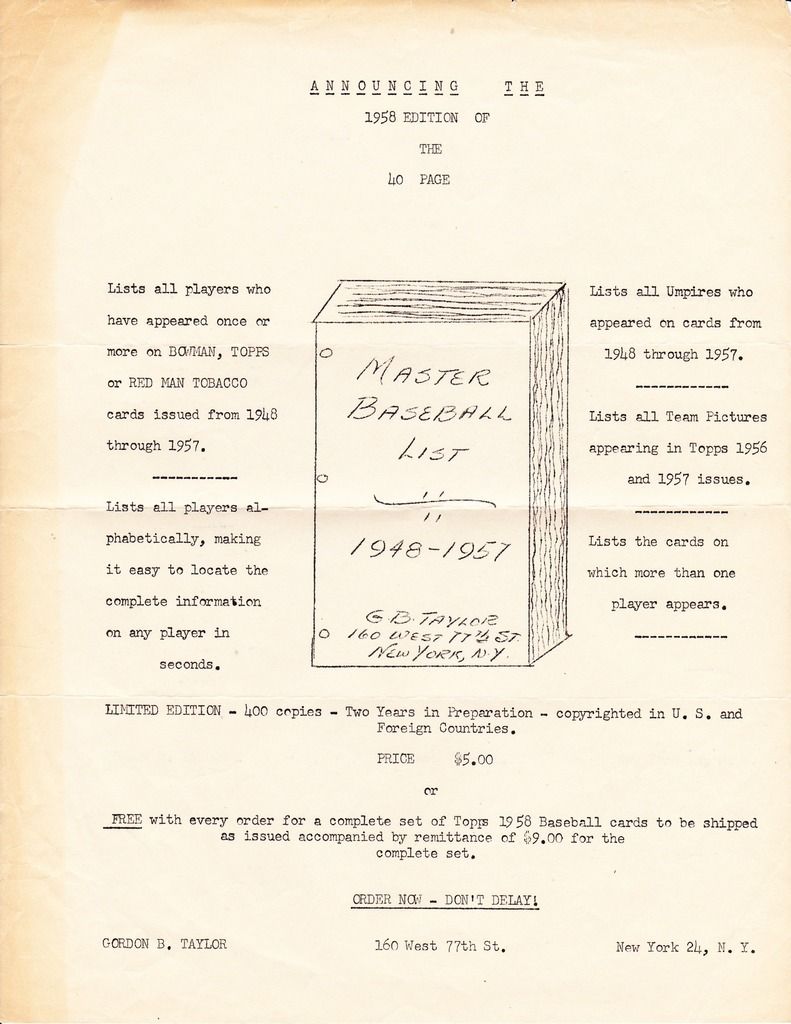
In August 1958, Taylor began publishing a monthly collecting newsletter, Card Comments, designed to promote card collecting in general (and, not incidentally, his business). The first issue is below, consisting of one 8.5" x 11" sheet folded in half to make four pages. At least in the early days, Taylor would type up and sign a personalized note to each new subscriber, one of which I've scanned below. Taylor continued to publish Card Comments monthly, expanding it to six pages in February 1959 and 16 pages by the end of 1959, through it remained typewritten and mimeographed throughout that period.
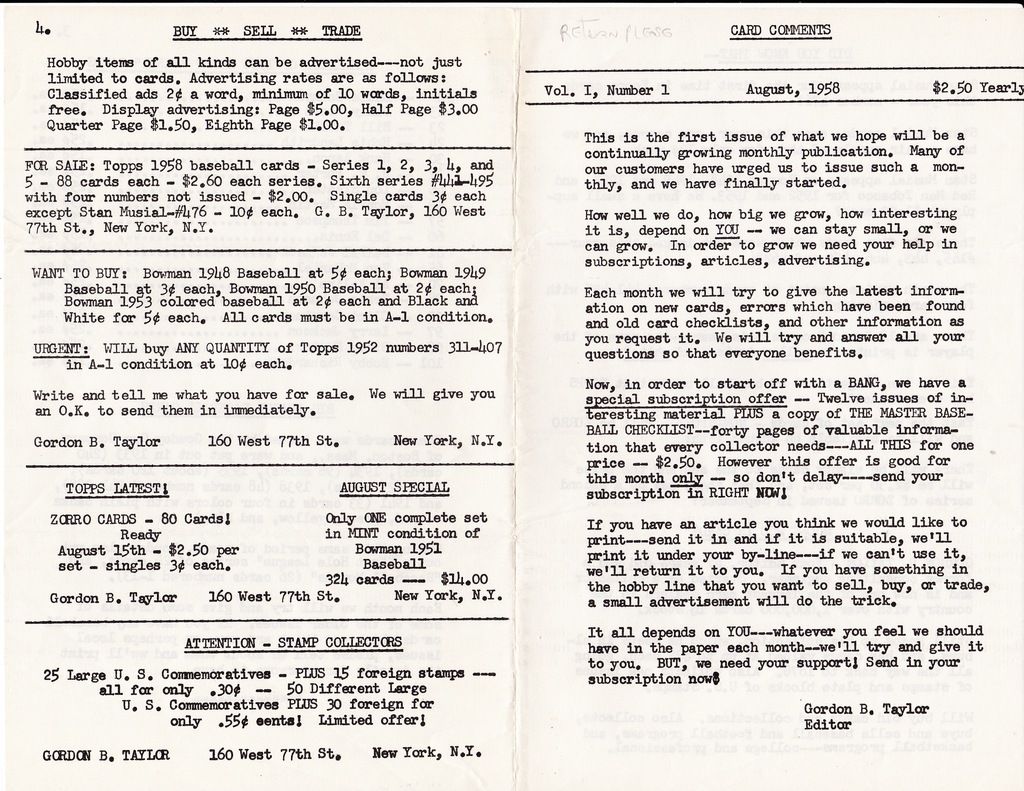
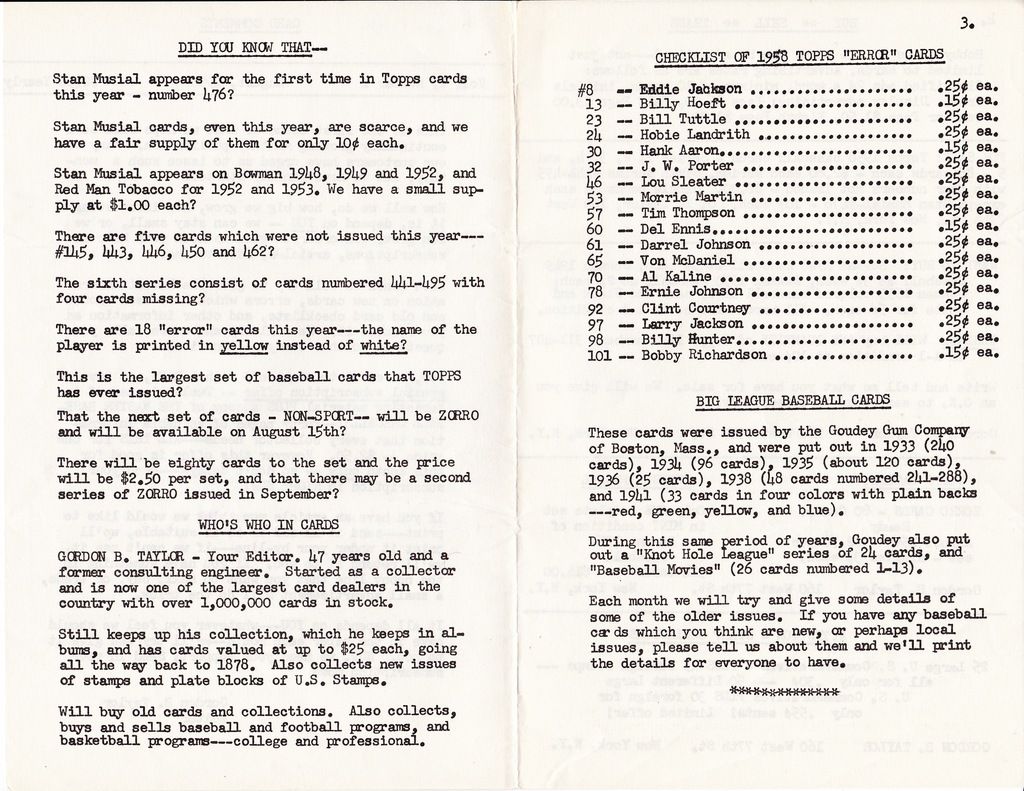
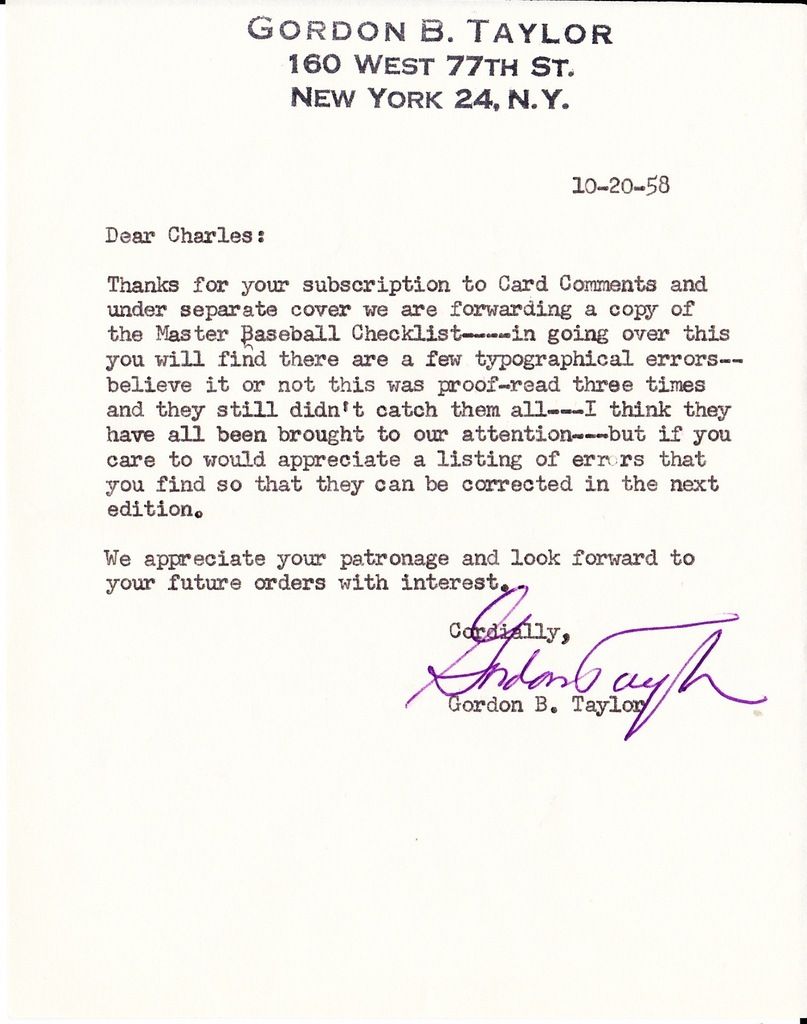
Meanwhile, Sam Rosen died unexpectedly on New Year's Eve 1958. His stepson Woody Gelman took over the business, renamed it Card Collectors' Company, and made other changes. In March 1959 he issued a relatively slick-looking typeset price list (see below) with a "handy order form", and a brief memorial to Rosen on the back page. Inserted in the price list was a one-page "Special Bulletin" announcing the 1959 Topps baseball cards and some other new issues, plus an offer of "Authentic Old Time Baseball Cigarette Cards" (presumably T206s) at 20 cents each, 15 for $2.50, or 60 for $10.00.
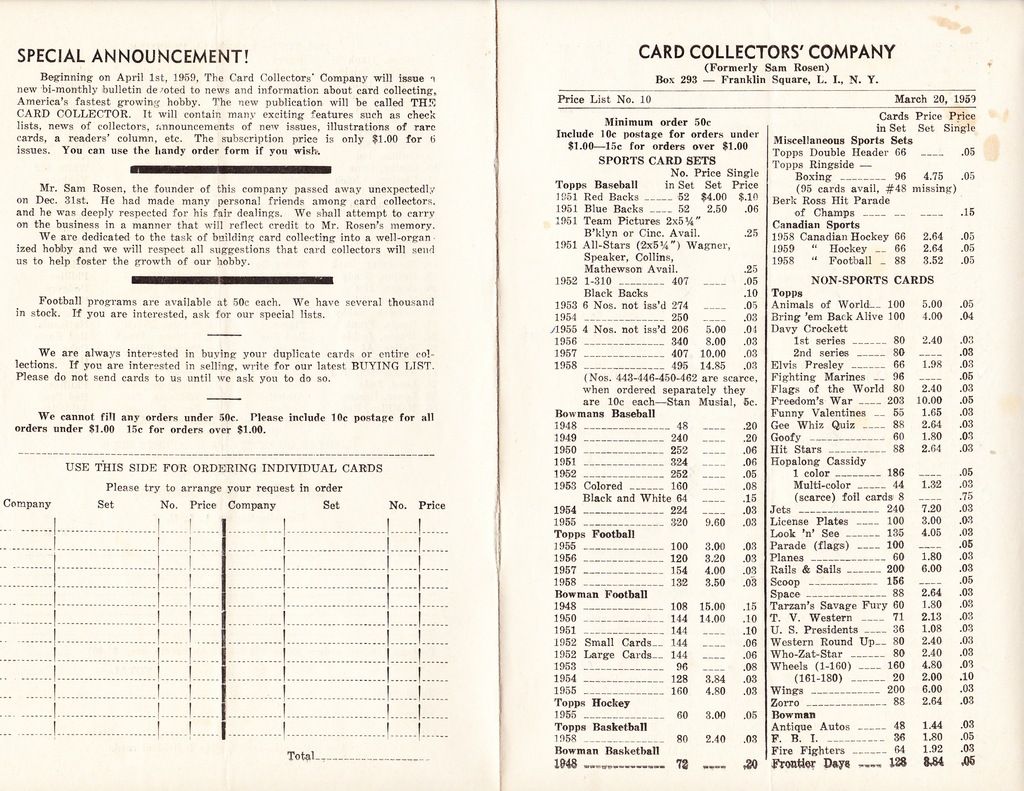
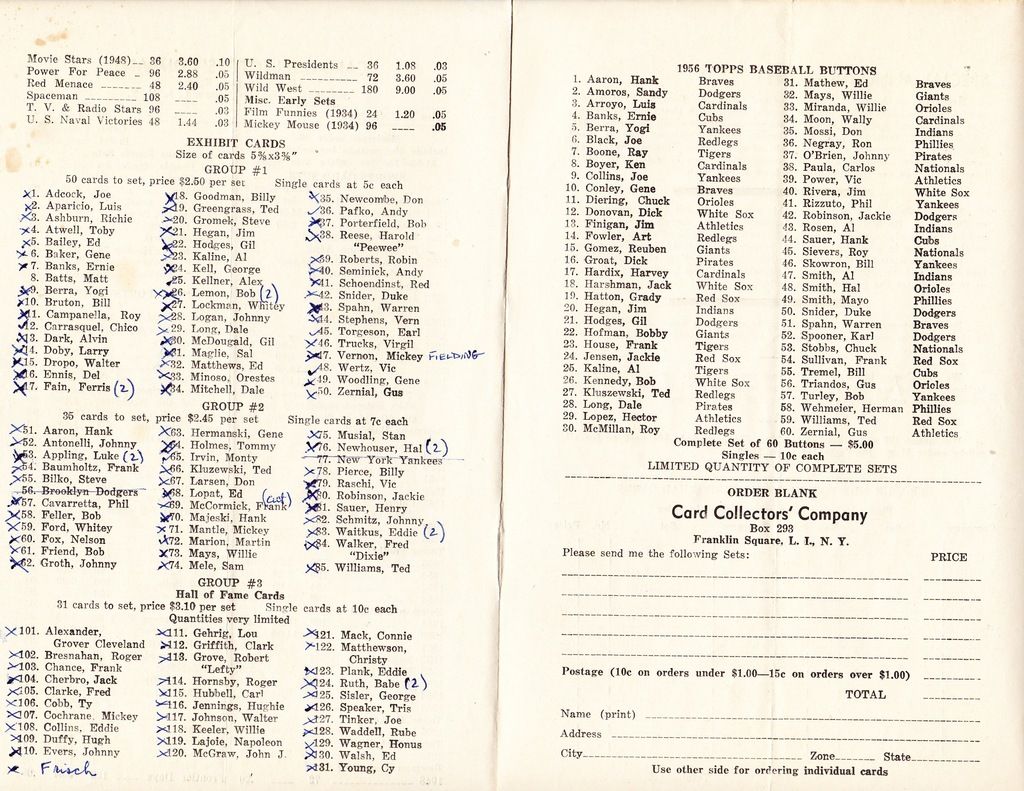
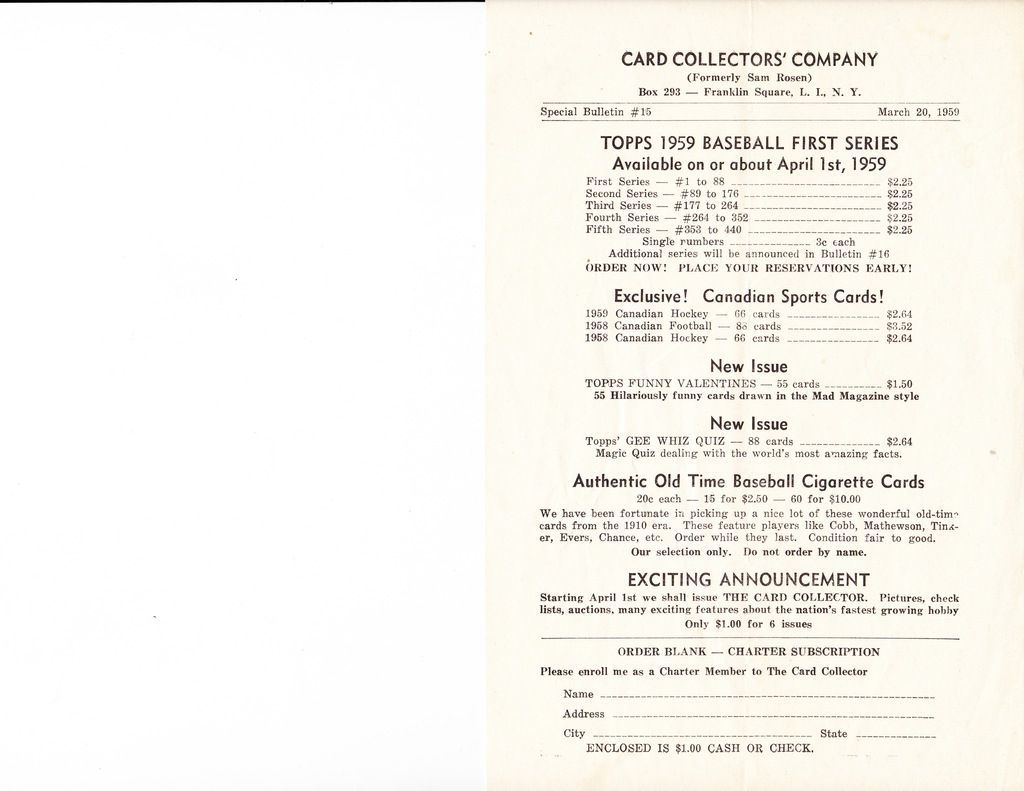
In that March 1959 price list, Gelman also announced the launch of a new bi-monthly newsletter, "The Card Collector", apparently designed as a competitor to Taylor's "Card Comments". When the first issue of The Card Collector came out on April 15, it was four pages long, like Taylor's initial effort, but it was larger (6" x 9" pages, rather than 5.5" x 8.5") and more professional looking, typeset rather than mimeographed. Gelman wrote an editorial about the growth of card collecting, including a tribute to Jefferson Burdick (with whom Gelman was then working on the 1960 American Card Catalog), and there were also articles on the 1951 Topps baseball sets and Exhibit cards, plus a preview of 1959 Topps baseball.
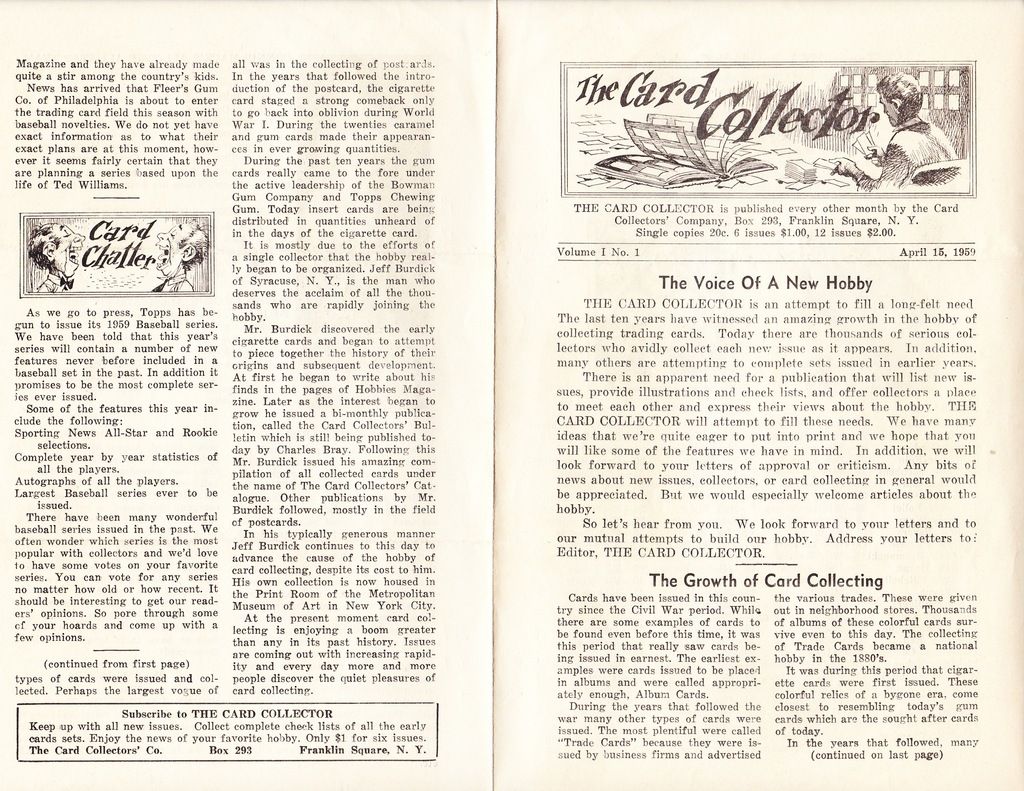
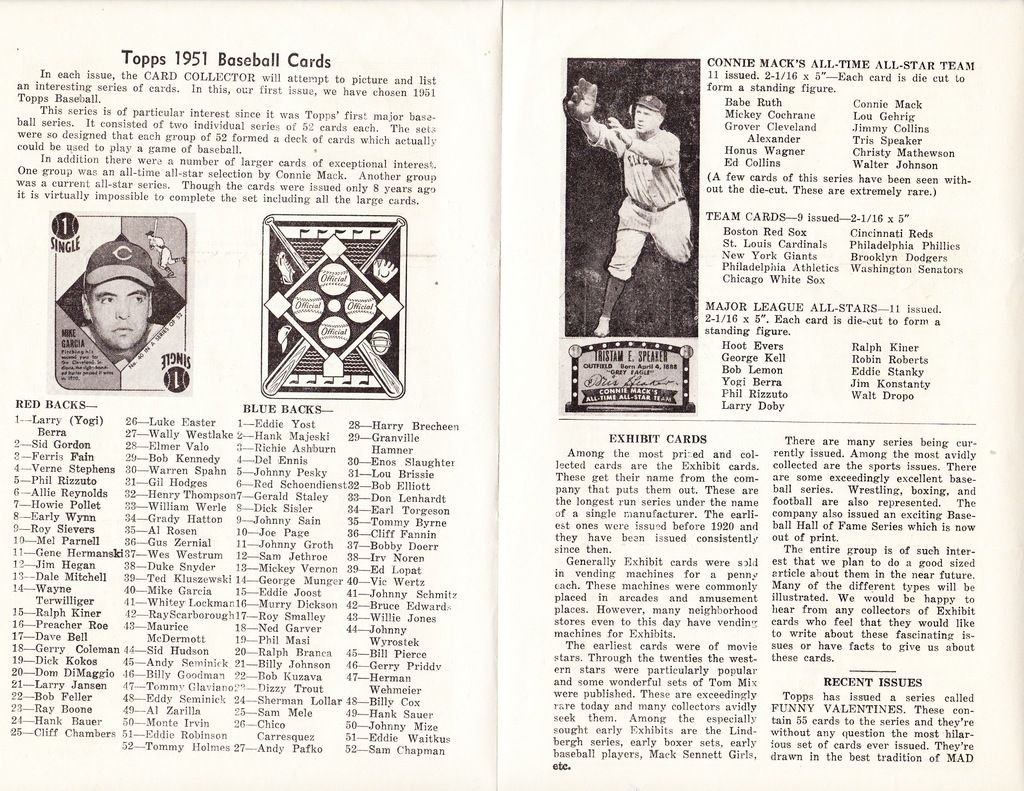
The more professional look of The Card Collector eventually prompted Gordon Taylor to make improvements in Card Comments, and both of them were pretty good hobby publications for a while. Both publications would run into problems a few years later and cease publication, but I'll leave that story for a later post on card dealers of the 1960s. To end this post, here is Gordon Taylor's price list from April 1, 1960, when he was just about at the height of his prominence as a card dealer. Note that he was charging a premium for Stan Musial cards, even though they were not scarcer than other cards. Gelman had also charged a premium for the 1958 Topps Musial in his March 1959 price list, as had Taylor in his ad on page 4 of the August 1958 Card Comments above. This was the start of the practice of charging more for star cards, a practice that would become more prevalent in the 1960s but be resisted fiercely by "serious" collectors. But that's also a story for a later post.
